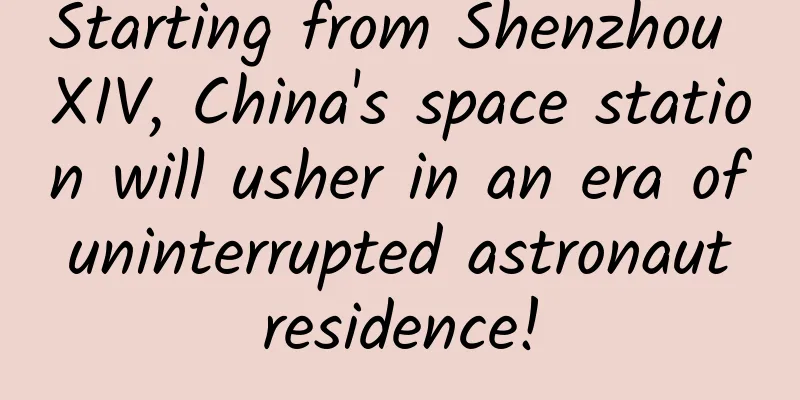Did the moon fall really happen?

|
There is a disaster movie called "Moonfall", which tells the story of a disaster that triggered a mysterious force, knocking the moon out of its orbit and heading towards the earth. One of the main characteristics of director Roland Emmerich is that the disasters he presents are not groundless or made up, but are based on certain real-life foundations and theoretical hypotheses. For example, "The Day After Tomorrow" refers to the "Quaternary Ice Age" hypothesis, which means that the era we are currently living in is actually an interglacial period of the Great Ice Age, and freezing weather may come at any time. "2012" refers to the Mayan prophecy and the "solar peak year" and neutrino burst hypothesis. △The Quaternary Ice Age hypothesis holds that we are in an interglacial period between a major ice age. So what was the reference for "Moonfall"? According to the director himself, it was the "Hollow Moon Theory" that he accidentally heard about seven years ago. 01 Hollow Moon Hypothesis On November 14, 1969, Apollo 12 landed on the moon. Astronaut Pete Conrad, in accordance with the planned mission, hit the landing site about 40 miles away with the force of one ton of TNT. Something strange happened: the shock wave from this impact built up and reached its peak in just eight minutes, and then took a full hour to completely dissipate. According to data from the seismograph installed on the moon, the wave curve of the moonquake starts with a small vibration and gradually increases. As the vibration increases, it continues to decrease until the vibration disappears. The whole process lasts for one hour. Simply put, the moon is like a bell. After being hit once, the lingering sound will linger for a long time. Copyright image, no permission to reprint As we all know, a solid object like a shot put will not make a residual sound when it is hit. Is the moon hollow? This incident was published in the then authoritative media "Popular Science", which instantly attracted the attention of countless people, and various speculations and conspiracy theories began to emerge. At this time, some people remembered the "Hollow Moon Theory" that had been proposed decades ago. In 1901, science fiction writer HG Wells imagined that the moon was hollow in his novel "First Man in the Moon". In 1970, Soviet astrophysicists Michael Vasin and Alexander Shcherbakov also mentioned the hollow moon theory, pointing out in Komsomolskaya Pravda: "The moon may be a product of aliens. For 1.5 billion years, the moon has been an alien space station. The moon is hollow, and there is an extremely advanced civilization inside it." Although this hypothesis is outrageous, it is believed by more and more people due to the Apollo impact incident. So is the moon really empty? It all comes down to water, really. Earth is made of materials that contain moisture, and when the energy of an earthquake travels through our planet, this wet material acts like a sponge, absorbing the waves' energy and ultimately dampening their impact. But the moon is dry, cool, and hard, more like a solid rock than a sponge. Copyright image, no permission to reprint So even if a moonquake isn't that strong, the vibrations can appear extraordinarily strong. Shock waves travel back and forth through the moon's interior, and the "reverberating bells" are the shock waves reverberating through the solid rock. The rumor of the hollow moon theory has been solved, so the question is, what happened to the moon falling? Why did Emmerich associate the hollow moon theory with such a bizarre disaster? In fact, the moonfall may have actually happened. 02 Moonfall - Formation of the Moon In 2004, mathematicians and astronomers at Princeton collaborated to write a report with a simple and crude title: Where Did the Moon Come From? This seems like a simple question, but just like the classic Fermi paradox, there are endless questions behind the simplicity. If you think deeply, it is difficult for ordinary people to give an answer. Where did the moon come from? Has it been there since the birth of the earth? Or did it slowly form after the birth of the earth? And the answer is really related to the fall of the moon. In the distant Hadean Eon, about 4.6 billion years ago, the Earth appeared. The newborn Earth was not as big as it is now, only about 60%-90% of its current size. Moreover, the environment of the newborn Earth was extremely harsh, a purgatory composed of a sea of fire. Copyright image, no permission to reprint About 100 million years later, a planet now named Theia came towards Earth at a direct hit angle. This planet was as large as Mars. The violent impact quickly shattered and melted Theia, and also knocked out some of the Earth's mantle. These debris were ejected and scattered around the Earth, and then reassembled through gravity and collisions, eventually forming the present-day Moon. Copyright image, no permission to reprint This is the famous "Giant Impact Hypothesis". This hypothesis was first published in the journal Icarus (a journal of solar system research) in 1975. The study also provided corresponding evidence: the lunar rocks brought back from the Apollo program contained oxygen isotope composition ratios that are almost exactly the same as those in the Earth's mantle - this suggests that the Earth and the Moon have a common origin. In addition, examination of chemical elements found that lunar rocks contain almost no volatile elements and light elements, and were therefore inferred to have been formed under extremely high temperatures and abnormally high heat - suggesting the presence of a collision. Although the giant impact theory also has some big and small bugs, for example, according to theory, most of the debris produced by the impact should come from Theia, and a small part from the Earth, but in fact some isotopes of lunar rocks, led by oxygen, are closer to those of the Earth. For example, Venus did not form a satellite like the Moon after a similar impact. However, this is still the most widely accepted theory. Even in recent years, many scientists have provided new evidence for the hypothesis. So in the distant past, the moon (the mother body of Theia) may have really fallen. 03 Disaster, is it really a disaster? Whether it is the disasters shown in movies or the disasters imagined in our minds, they all seem to point to one thing in common: disasters are abnormal and they bring only destruction and death. Is this really the case? Snow and ice, volcanic eruptions, meteorite impacts... these natural "events" can only bring destruction and chaos? In fact, the reason why we can live in today's stable world system is probably mostly due to "disasters". Speaking of this, we have to bring up another theory, "The Earth's Anomaly Theory". The Earth-uniqueness hypothesis is a theory about why we are alone (why the Earth is so special) that the formation of multicellular life on Earth requires an extremely incredible combination of astrophysical and geological events and environments. Copyright image, no permission to reprint The emergence of life requires the presence of a galaxy's habitable zone, a suitable planetary system, an appropriate planet size, favorable conditions such as a huge natural satellite (such as the moon), a planet with a magnetosphere and corresponding plate movement, a lithosphere, an atmosphere, as well as oceans, huge glaciers, and asteroid impacts. Only under the influence of extremely complex events will there be a very small probability that life will appear. Copyright image, no permission to reprint The Earth is such a special existence. It is a planet of life composed of numerous coincidental events, and the giant impact hypothesis provides strong evidence for the theory of the Earth's uniqueness. For example, according to the giant impact theory, Theia's impact angle was very clever, which not only avoided the complete destruction of the Earth, but also produced a Moon of appropriate size and orbit, which stabilized the precession of the Earth's rotation axis. At the same time, it also knocked the Earth out of its current inclination, stabilizing the Earth's climate. This impact also increased the mass of the Earth, and according to the law of universal gravitation, the Earth's ability to absorb water and air increased. This began to create a suitable environment for the emergence of life. Under the influence of tides, marine life began to rush to land, and land plants began to appear. The huge space on land finally had a place to use its power. Devastating disaster brings new life. Do you remember the Mayan prophecy? In fact, the Mayans did not say that 2012 was the end of the world, but the end of a reincarnation and the beginning of a reincarnation. Transformation and ascension may be the true meaning of 2012. From a macro perspective, disasters do not necessarily bring only destruction, but for each of us living on Earth, it is best not to experience a disaster in our lifetime. Source: China National Geographic BOOK (ID:cngbook360) This article has been authorized. Please contact the original author for reprinting. The cover of this article and the pictures with watermarks in the text are from the copyright library and are not authorized for reproduction |
>>: Another one discovered! Is a world-class tiankeng cluster hidden in China?
Recommend
7 effective speech lessons to improve your speaking ability, 10 minutes a day to quickly improve your eloquence
Improve your speaking ability, 10 minutes a day e...
How much does it cost to be a Wenshan agent for a mechanical equipment mini program?
How much does it cost to be an agent of the Wensh...
Why do some people hate cilantro, while others love it? Here's the reason!
Coriander is very familiar to everyone. As a plan...
Xigua, Huoshan, and Douyin data: daily activity, retention, and average daily usage times and duration
Everyone knows that the Internet short video fiel...
Do you like this iOS 14 concept design?
Although it is less than half a year away from th...
The Empress Dowager Cixi couldn't eat Ma Xiaoer? The past of crayfish "conquering" the world...
In August, crayfish is the leader of night market...
Catching fireflies to make lanterns is beautiful, but it is really difficult to use...|BoLan Daily
Catch fireflies to make lanterns, It's beauti...
When using JSONObject, you need to be careful to avoid a problem
[[177050]] Bao Xiehao, Xiaomi MIUI department, he...
How to increase traffic, popularity and playback volume of Tik Tok works?
Those who have made or played Douyin know that Do...
Colliers: Insights into China's new energy vehicle overseas market in 2024
For vehicle manufacturers, it is relatively more ...
Google Photos now supports Apple's Live Photos feature
In the latest iOS version update, Google Photos h...
When I check the source code of a web page, it is all garbled, but the page displays normally. What's going on?
When I check the source code of a web page, it is...
After being hit by bird poop, I discovered a "shocking" secret!
Have you ever been hit by bird poop? I don't ...
Pre-prepared meals are convenient, but it is recommended not to eat them if possible
Hello, this is Science Popularization China. Toda...
European Automobile Manufacturers Association: European new car sales in November 2024 will be 1.06 million, a year-on-year decrease of 2%.
European car sales fell last month as slowing dem...









